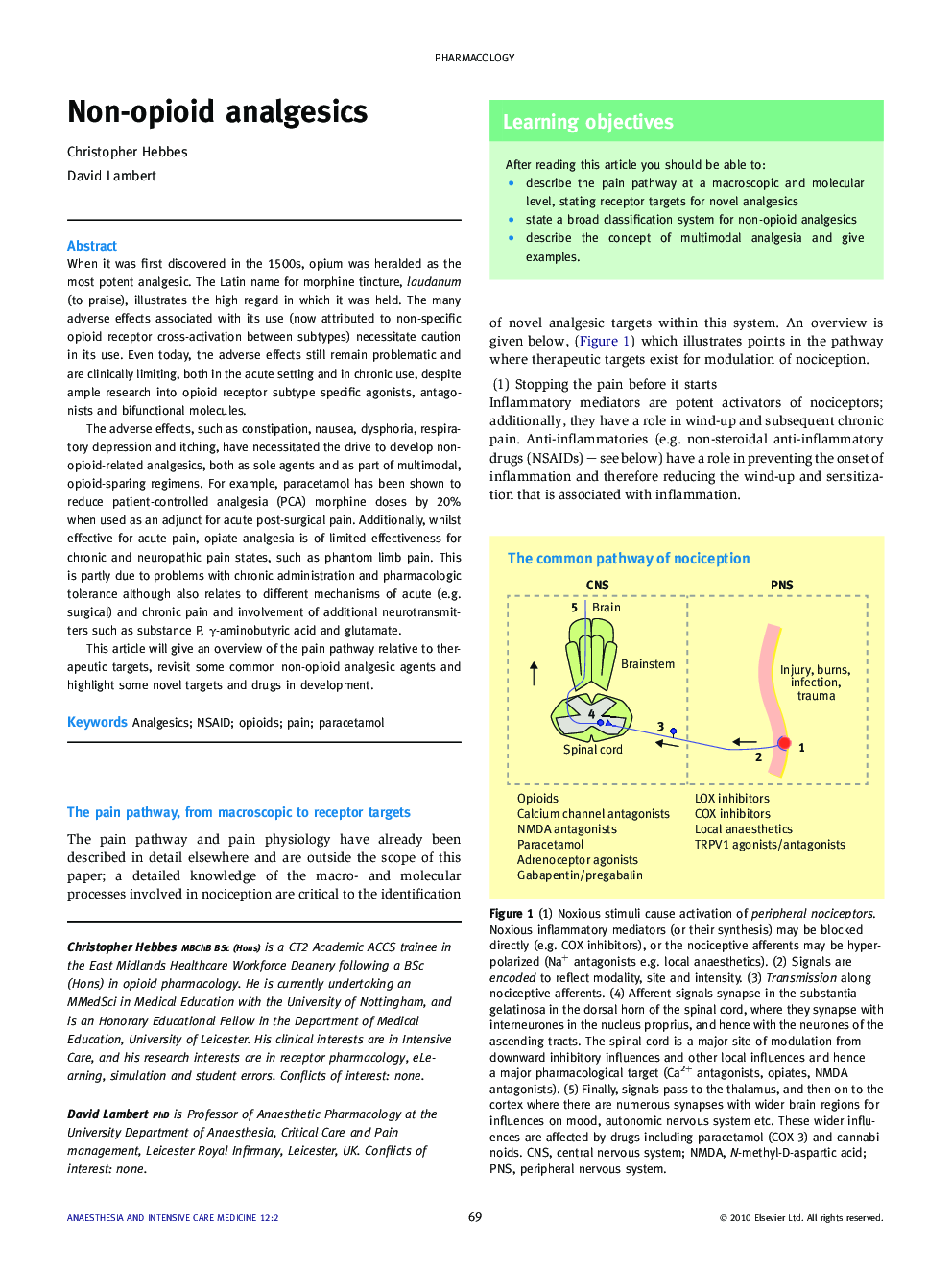| Article ID | Journal | Published Year | Pages | File Type |
|---|---|---|---|---|
| 2743136 | Anaesthesia & Intensive Care Medicine | 2011 | 4 Pages |
When it was first discovered in the 1500s, opium was heralded as the most potent analgesic. The Latin name for morphine tincture, laudanum (to praise), illustrates the high regard in which it was held. The many adverse effects associated with its use (now attributed to non-specific opioid receptor cross-activation between subtypes) necessitate caution in its use. Even today, the adverse effects still remain problematic and are clinically limiting, both in the acute setting and in chronic use, despite ample research into opioid receptor subtype specific agonists, antagonists and bifunctional molecules.The adverse effects, such as constipation, nausea, dysphoria, respiratory depression and itching, have necessitated the drive to develop non-opioid-related analgesics, both as sole agents and as part of multimodal, opioid-sparing regimens. For example, paracetamol has been shown to reduce patient-controlled analgesia (PCA) morphine doses by 20% when used as an adjunct for acute post-surgical pain. Additionally, whilst effective for acute pain, opiate analgesia is of limited effectiveness for chronic and neuropathic pain states, such as phantom limb pain. This is partly due to problems with chronic administration and pharmacologic tolerance although also relates to different mechanisms of acute (e.g. surgical) and chronic pain and involvement of additional neurotransmitters such as substance P, γ-aminobutyric acid and glutamate.This article will give an overview of the pain pathway relative to therapeutic targets, revisit some common non-opioid analgesic agents and highlight some novel targets and drugs in development.
